Wondering whether you should keep or throw away your favorite pillow? The answer depends on its quality, materials, and overall condition, among other factors.
In This Guide
Pillow Lifespan by Type | How Long Do Pillows Last | Signs It’s Time to Replace Your Pillow | Germ & Bacterial Growth
The table below details how long you can expect different mattress types to last.
Pillow Lifespan by Type
| Material | Expected Lifespan | Expected Cost |
|---|---|---|
| Polyester Pillows | 1-2 years | $ |
| Foam Pillows | 2-3 years | $$ |
| Cotton Pillows | 2-4 years | $$ |
| Latex Pillows | 5-10 years | $$$ |
| Down Pillows | 5-10 years | $$$ |
For example, if your pillow is made of natural materials (like down, feathers, or latex) you can expect a longer lifespan, 5-10 years, making it a worthwhile investment for many sleepers.
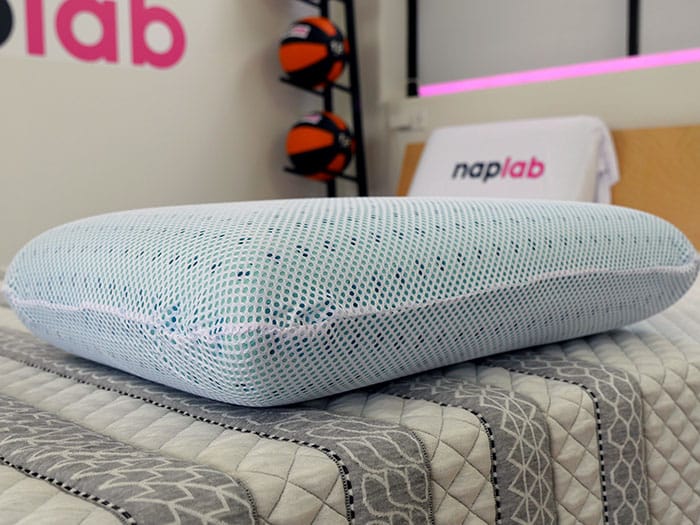
But if your pillow is made from synthetic materials, it may not last longer than a year or two.
That said, here’s how often you should replace your pillows for a good night’s sleep.
How Long Do Pillows Last?
Just like your mattress and bedsheets, pillows have a limited lifespan and should be replaced every few years. However, there are no set rules on how often you should do it.
Some pillows last longer than others, depending on the following factors:
#1. Materials
Foam pillows have an average lifespan of two to three years. They usually get harder over time, which may cause discomfort during sleep.
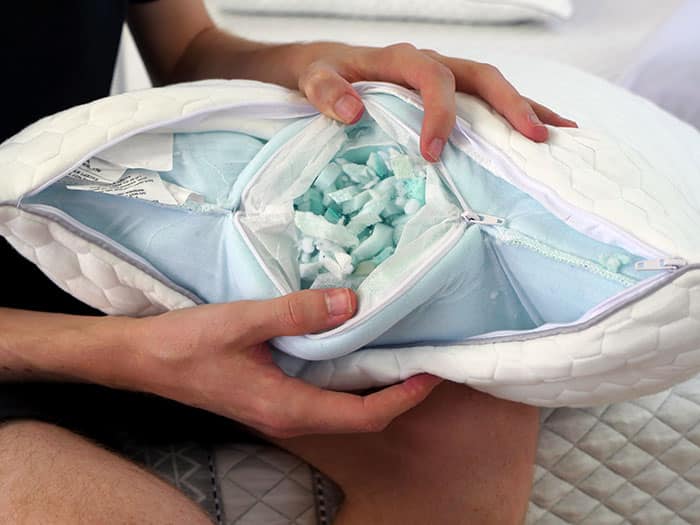
Latex pillows are more durable and some models can last five to 10 years or more. The same goes for buckwheat pillows, which have a longer-than-average lifespan.
At the opposite end are polyester pillows, which last one or two years. Cotton pillows are somewhere in the middle, with an average lifespan of two to four years.
#2. Pillow Care and Maintenance
It goes without saying that your pillows will last longer with proper care. Simple things, such as using pillow protectors, can help reduce wear and tear.
Ideally, wash your pillows at least every three months to prevent bacteria growth. Also, make sure you clean and dry them according to the manufacturer’s instructions.
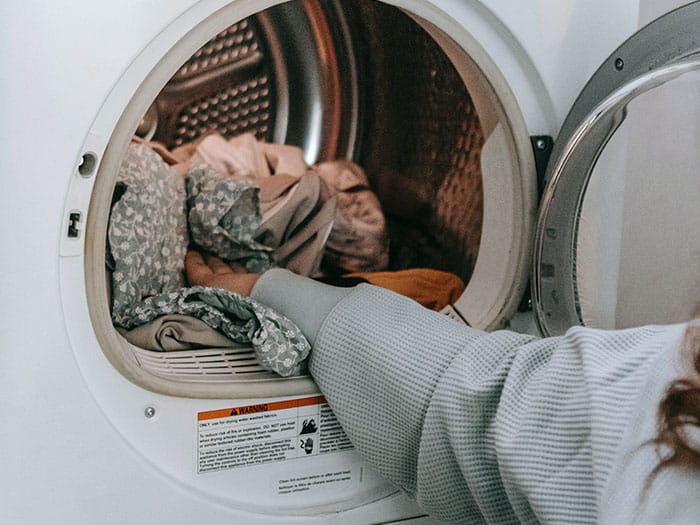
#3. Your Sleeping Habits
A pillow’s lifespan also depends on how you sleep.
For example, your pillows may wear down faster if you toss and turn a lot at night. Other habits, such as sleeping with wet hair, can promote mold growth and compromise the pillow’s integrity.
#4. Environmental Factors
Some people store their pillows in a garage, basement, or attic, exposing them to humidity and extreme temperatures.
These environmental factors can cause the pillow to deteriorate faster. There’s also a risk of mold growth, especially if you keep your pillows in a damp space.
Your best bet is to store them in a cool, dry place, such as a linen closet or a basket in the corner of your bedroom.
Signs It’s Time to Replace Your Pillows
As discussed above, pillows can last one to 10 years or longer, depending on their quality, composition, and other factors.
But how can you tell it’s time to replace your pillow?
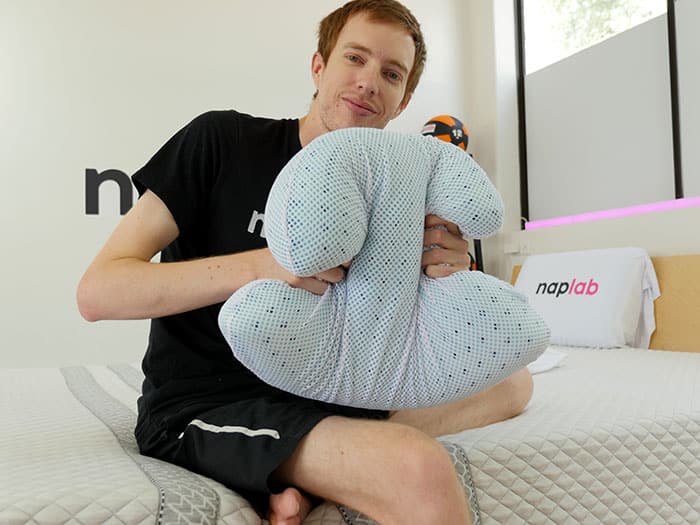
For starters, place it on a chair or table and press down firmly. If it doesn’t return to its original shape, go ahead and replace it with a new pillow.
Apart from that, look out for the following signs:
- Stains or smells that persist after washing
- Sagging or lumpiness
- Frayed seams, tears, and other signs of wear and tear
- The pillow feels too soft, too hard, or has started to flatten out
- You have neck or back pain in the morning
- You wake up with a runny nose, watery eyes, hives, or other allergic reactions
Over time, most pillows experience changes in shape, which can impact how well you sleep. In some cases, an older pillow may look new but fail to provide the support you need.
When that happens, it’s time to throw them away or repurpose them into other everyday items, such as a floor cushion or pet bed.
Old Pillows Can Become Breeding Grounds for Germs
Any pillow can become a breeding ground for bacteria, fungi, and yeasts, even with regular washing. These germs may worsen asthma and allergies, causing all sorts of symptoms.
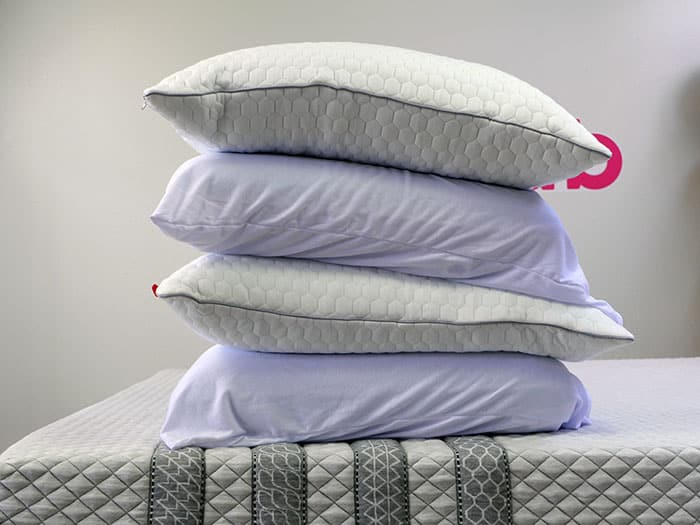
In one study, researchers took samples from 10 pillows that had been used for 18 months to 20 years.
All samples contained four to 16 fungal species, such as Aspergillus fumigatus, a germ responsible for lung infections. This fungus may also exacerbate asthma and cause allergic sinusitis in people prone to allergies.
Old pillows can also accumulate body oils, pet dander, dead skin, and dust mites.
As surprising as it may seem, we shed around 30,000 to 40,000 dead skin cells per minute or nine pounds per year. Most of that ends up on our sheets and pillows, serving as food for dust mites.
These bugs can trigger mild to severe allergic reactions, eczema, itchy skin, and other problems.
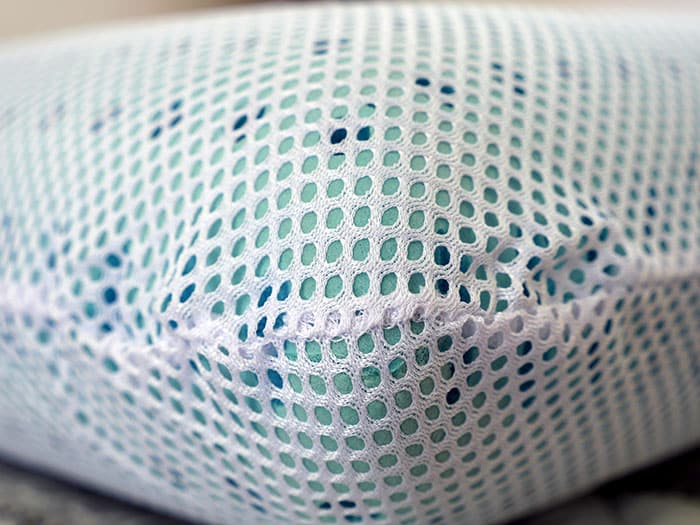
For example, you may find yourself coughing or gasping for air—despite being in good health.
Given these aspects, it makes sense to replace your old pillows sooner rather than later. In the meantime, use a hypoallergenic cover to protect them from dust mites, bacteria, and other germs.



